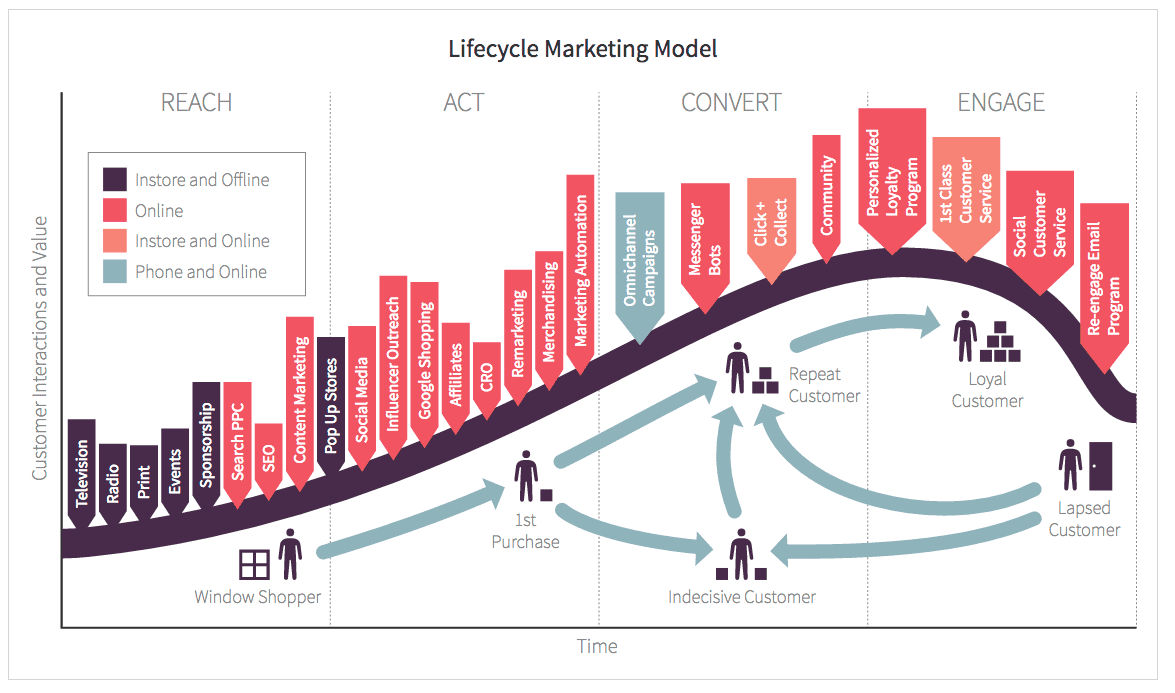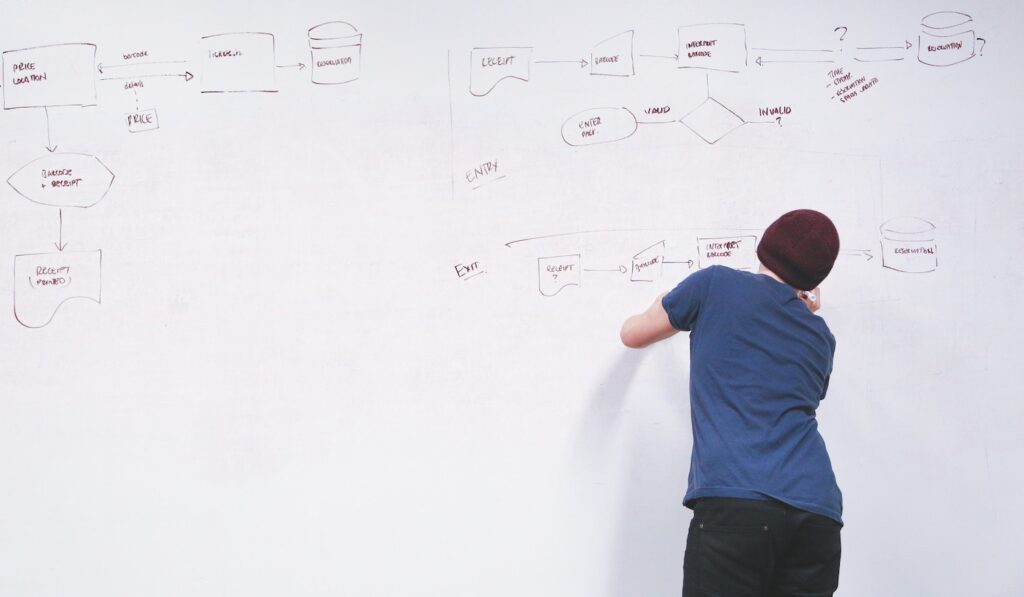In the rapidly changing world of marketing, understanding and implementing effective strategies is paramount. One such strategy that has gained significant prominence in recent years is Lifecycle Marketing. This approach recognizes that a customer’s journey with a brand is not a one-time event but a dynamic and evolving relationship. In this comprehensive guide, we’ll explore what Lifecycle Marketing is, why it’s essential, and the key components that make it successful.
Understanding What is Lifecycle Marketing
Lifecycle Marketing is a strategic approach that revolves around understanding and catering to the diverse needs of customers at different stages of their journey with a brand. It acknowledges that customers go through distinct phases, from the initial interaction to becoming loyal advocates, and tailors marketing efforts accordingly.
The Customer Lifecycle Phases
- Awareness: This is the initial stage where potential customers become aware of your brand, product, or service. They might have encountered your brand through social media, advertisements, or word-of-mouth.
- Consideration: In this phase, customers are actively researching and evaluating your offerings. They might visit your website, compare products, and read reviews.
- Conversion: At this point, customers make a purchase or take a specific desired action, such as signing up for a newsletter, filling out a contact form, or making a booking.
- Retention: After the conversion, your goal is to retain customers and encourage repeat business. This involves providing excellent customer service, personalized communication, and loyalty programs.
- Advocacy: Loyal customers who have had positive experiences with your brand can become advocates. They refer your business to others, leave positive reviews, and engage with your content.

Why Lifecycle Marketing Matters
- Personalization: Lifecycle Marketing allows you to tailor your communication and offerings to individual customer needs, increasing the chances of engagement and conversion.
- Customer Retention: By focusing on retention strategies, you can build long-term relationships with customers, reducing the need for constantly acquiring new ones.
- Efficiency: It streamlines marketing efforts by directing resources to where they’re most effective based on the customer’s stage in the lifecycle.
- Brand Loyalty: Creating positive experiences and addressing customer needs throughout their journey fosters brand loyalty and advocacy.
Mastering Lifecycle Marketing
To become proficient in Lifecycle Marketing, you must delve into various components and strategies. Here’s a comprehensive list to guide your journey:
- Customer Segmentation: Dividing your audience into distinct groups based on shared characteristics.
- Customer Personas: Creating detailed profiles representing your ideal customers.
- Customer Journey Mapping: Visualizing the steps customers take from awareness to advocacy.
- Content Marketing: Creating and distributing valuable content to attract and engage customers.
- Email Marketing: Leveraging email for personalized communication and nurturing.
- Marketing Automation: Using tools to automate repetitive marketing tasks.
- Lead Generation: Techniques to attract potential customers and gather their information.
- Conversion Rate Optimization (CRO): Optimizing your website to increase conversion rates.
- Social Media Marketing: Using social platforms for brand awareness and engagement.
- Search Engine Optimization (SEO): Enhancing online visibility and ranking in search results.
- Paid Advertising: Strategically using paid ads for targeted reach.
- Analytics and Data Analysis: Collecting and analyzing data to make informed decisions.
- A/B Testing: Experimenting with variations to improve marketing performance.
- Customer Feedback and Surveys: Gathering insights from customers for improvements.
- Customer Retention Strategies: Techniques to keep existing customers satisfied.
- Referral Marketing: Encouraging customers to refer others to your brand.
- Customer Lifetime Value (CLV): Calculating the total value a customer brings over time.
- Churn Prevention: Strategies to reduce customer churn or attrition.
- Advocacy Programs: Encouraging loyal customers to become brand advocates.
- Customer Service and Support: Providing excellent post-purchase assistance.
- Mobile Marketing: Tailoring strategies for mobile device users.
- User Experience (UX) Optimization: Enhancing website and app usability.
- Personalization: Customizing marketing for individual preferences.
- Retention Metrics: Measuring and monitoring customer retention rates.
- Data Privacy and Compliance: Ensuring adherence to data protection regulations.
- Multi-Channel Marketing: Coordinating marketing efforts across multiple channels.
- Budgeting and ROI Analysis: Managing marketing budgets and measuring returns.
- Lifecycle Marketing Tools: Utilizing software and platforms for lifecycle strategies.
- Predictive Analytics: Using data to predict future customer behavior.
- Customer Segmentation Models: Advanced models for precise targeting.
- Marketing Funnel Optimization: Streamlining the customer journey for efficiency.
- Customer Relationship Management (CRM): Managing and analyzing customer interactions.
- Marketing Attribution Models: Understanding which marketing efforts drive results.
- Voice Search Optimization: Optimizing content for voice-activated devices.
- AI and Machine Learning: Leveraging AI for insights and automation.
- Marketing Compliance: Adhering to legal and industry-specific regulations.
- International Marketing: Expanding marketing efforts globally.
- Community Building: Fostering communities around your brand.
- Influencer Marketing: Collaborating with influencers to reach new audiences.
- Customer Advocacy Platforms: Using tools to manage advocacy programs.
- Voice of the Customer (VoC) Programs: Listening to and acting on customer feedback.
- Sales and Marketing Alignment: Ensuring coordination between sales and marketing teams.
- Ethical Marketing: Conducting marketing with moral principles and transparency.
- Agile Marketing: Embracing agile methodologies for marketing flexibility.
- Competitive Analysis: Studying competitors to refine your marketing strategies.
- Content Personalization Engines: Implementing advanced content customization.
- Customer Education: Providing resources and information to customers.
- Diversity and Inclusion: Promoting diversity in marketing campaigns.
- Mental Models: Understanding psychological frameworks for marketing.
- Innovation: Incorporating innovative strategies and technologies.

Additional Valuable Topics
- Lifecycle Marketing Automation: Explore advanced automation techniques for personalized customer journeys.
- Marketing AI: Understand how artificial intelligence is transforming marketing strategies.
- Customer Data Platforms (CDPs): Learn about CDPs for unified customer data and insights.
- Content Distribution Strategies: Dive into strategies for reaching the right audience with your content.
- Hyper-Personalization: Explore the future of marketing with hyper-personalized experiences.
- Cross-Channel Integration: Discover how to integrate marketing efforts seamlessly across channels.
- Behavioral Economics: Understand the psychology of customer behavior and decision-making.
- Marketing Metrics Dashboard: Create an advanced dashboard to monitor key marketing metrics.
- Internationalization Strategies: Learn to expand your brand internationally while respecting cultural differences.
- Sustainability in Marketing: Explore sustainable marketing practices and their impact on customer loyalty.
Conclusion
Mastering Lifecycle Marketing is a dynamic journey that requires continuous learning and adaptation. By embracing these concepts and strategies, you can build stronger, more meaningful relationships with your customers and drive sustained business growth.

